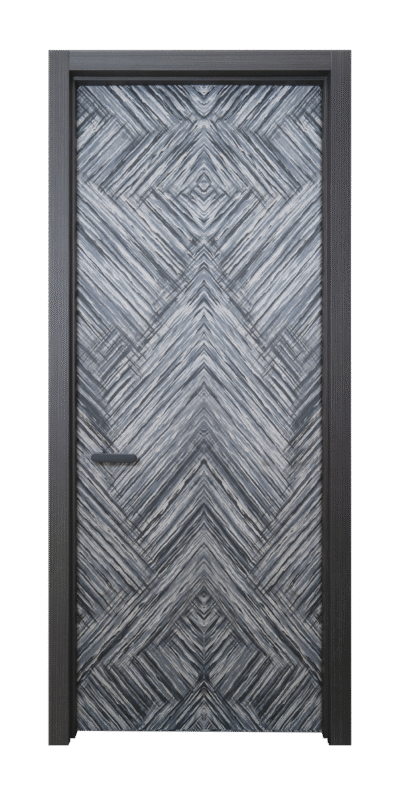The psychology of interior doors is an often‑overlooked aspect of design that can have a profound impact on how people feel, think, and interact within a space. Doors are more than functional barriers — they’re visual cues, mood setters, and subtle influencers of behavior. From the color and material to the placement and style, every choice you make about interior doors can shape atmosphere, guide movement, and even affect productivity.
At MR. DOOR US, we design modern, pre‑hung interior doors that don’t just look exceptional — they’re engineered to create spaces that feel right, function efficiently, and align with your design vision. And because no two projects are the same, we specialize in custom orders — from unique door sizes and finishes to specialized hardware — tailored to the exact requirements of your building project or remodeling plan.
The Power of Color Psychology in Interior Doors
Color is one of the fastest ways to influence mood. According to Verywell Mind’s research on color psychology, color choices can directly impact emotions and focus levels:
- Neutral tones (white, beige, soft gray) promote calm, clarity, and openness — ideal for bedrooms, offices, or meditation spaces.
- Bold colors (deep blue, forest green, rich red) spark creativity, confidence, and energy — perfect for studios, brainstorming rooms, or collaborative workspaces.
- Dark wood finishes (walnut, espresso) convey sophistication, stability, and authority — great for libraries, executive offices, or formal living rooms.
When applying the psychology of interior doors, think beyond matching décor — consider the emotional tone you want to set in each room.
Material and Texture Choices for Interior Doors
The tactile and visual qualities of a door affect how a space is experienced. The psychology of interior doors extends to how they feel under your hand and how they reflect light:
- Solid‑core wood – Offers privacy, sound control, and a premium, substantial feel.
- Glass panels – Encourage openness, light flow, and visual connection between spaces.
- Matte finishes – Soft, understated, and cozy, ideal for creating a relaxed atmosphere.
- Glossy finishes – Reflective, bright, and energizing, perfect for modern, vibrant interiors.
- Textured surfaces – Wood grain, brushed metals, or patterned panels add depth and craftsmanship.
For more on current finish trends, see Architectural Digest’s 2025 interior design report.
Door Placement and Flow in Interior Design
Placement is a key factor in the psychology of interior doors. Where a door sits — and how it opens — can influence movement, privacy, and even collaboration:
- Pocket/sliding doors – Save space, create seamless transitions, and work well in open‑plan living or collaborative work environments.
- Swing doors – Establish clear boundaries, helping define private or focused work areas.
- Glass doors – Maintain visibility while controlling sound, ideal for offices where communication and concentration both matter.
Strategic placement can improve workflow, encourage interaction, or create quiet zones — depending on your goals.
Balancing Privacy and Connection
The type of interior door you choose can influence how connected or private a space feels:
- Solid doors – Reduce noise and visual distractions, supporting focus in bedrooms, offices, or study areas.
- Frosted glass doors – Allow light to pass through while maintaining privacy, making them ideal for shared spaces.
- Open archways or double doors – Promote social interaction and a sense of openness in living rooms, dining areas, or meeting spaces.
Balancing privacy and connection is a central principle in the psychology of interior doors.
Applying Door Psychology in Real Projects
When designing or renovating, consider these practical applications:
- Match the door to the room’s purpose – A creative studio might benefit from bold colors and glass panels, while a bedroom may call for a solid, sound‑reducing door in a calming tone.
- Think about light – Glossy finishes and glass panels can brighten darker spaces, while matte finishes can soften overly bright rooms.
- Plan for flow – In high‑traffic areas, sliding or pocket doors can improve movement and save space.
- Coordinate with other elements – Hardware, trim, and flooring should complement the door’s style and finish.
And remember — if your project has unique specifications, MR. DOOR US can custom‑build interior doors to fit exact dimensions, match specific finishes, or meet specialized building codes.
The MR. DOOR US Advantage
Our Full Package Door Systems make it easy to bring these psychological design principles to life. Each door comes:
- Pre‑hung for quick installation
- Pre‑finished in modern, durable styles
- Complete with precision‑fitted hardware for a perfect fit
- Available in fully custom configurations for any residential or commercial project
Whether you’re outfitting a single room, an entire property, or a large‑scale development, we can deliver custom doors that meet your exact requirements.
Sustainability and Well‑Being
The psychology of interior doors also intersects with sustainability and health:
- Low‑VOC finishes improve indoor air quality
- Durable materials reduce the need for replacements
- Efficient manufacturing minimizes waste
These choices not only benefit the environment but also contribute to a healthier, more comfortable living or working space.
📦 Transform Your Space Today
Explore our premium interior door collection and discover how the right door can enhance mood, productivity, and style. Whether you need a standard model or a custom‑built door for a unique project, MR. DOOR US delivers solutions that combine beauty, performance, and precision.



